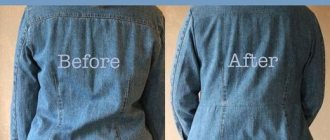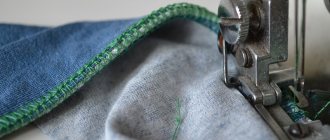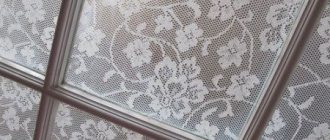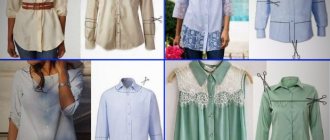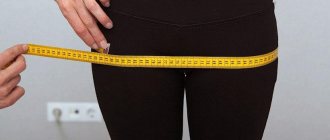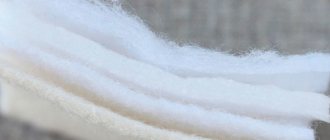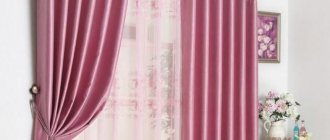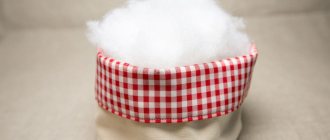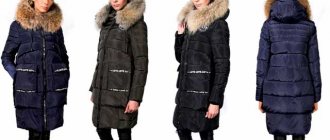You can decorate a denim jacket with patterns, embroidery, lace, beads, or you can even change its color beyond recognition. After simple manipulations, the jacket will look renewed and you will want to wear it again.
When choosing any of the alteration options proposed below, you need to take into account that after the work done, the jacket will change its style. If classic denim can be worn with anything, then a product with lace will look ridiculous with wide sports trousers. Remodeling is possible even from improvised means that can be found at home.
How is embroidery done on denim?
Embroidery is always stylish and beautiful. She is now at the peak of popularity, so this method of alteration is one of the most favorite among fashionistas. You can choose simple or complex elements for embroidery, the main thing is that you have the perseverance to complete the work to the end. Embroidery requires patience or perseverance, especially if it is floral arrangements. Alternatively, you can embroider symbols, the first letter of the name, a separate flower, etc.
You only need to embroider with thick, dense threads. Denim or floss are ideal. Theoretically, you can work with standard ones, but the embroidery will not turn out so bright and attractive.
Important! As when working with embroidery on other products, you will need a hoop, and to transfer the design, you will need water-soluble interlining or carbon paper. If non-woven fabric is used for embroidery, you can embroider on it, and it is removed after completion of the work.
Embroidery patterns - options
You can embroider using satin stitch, chain stitch or cross stitch. In the latter case, embroidery patterns can be found online and printed for transfer to fabric. There is another option - embroider a design you like on canvas, then cut it out, trim the edges and sew it onto the jacket. In this case, you will get something like an application. Examples:
Torn edges and tears
Like embroidery, torn edges and abrasions are relevant for jeans. First you need to mark with chalk or soap where exactly the abrasions are needed.
Important! To make it more convenient to work with the jacket when cutting through, plywood should be placed under the bottom. To ensure immobility, secure the product with tape or pins, depending on the surface.
The marked areas can be rubbed with sandpaper to make cutting easier and the gap to look more natural. After this, arm yourself with a stationery knife and make slits along all the marks. After this, all that remains is to pull out the threads. Jeans in its structure resembles a mesh with the intersection of vertical and horizontal threads. So, you need to remove as many blue vertical threads as possible so that only white horizontal threads remain.
If you don't need holes, but only small abrasions, then you can do it even simpler. Take a regular metal grater and rub the jacket in the designated areas.
Important! To create a distressed effect, the denim should not be too thick and not too thin, as these models are quite difficult to work with.
What about your favorite jeans?
Dear friend, did you know that the history of jeans began in San Francisco, when 24-year-old Jewish emigrant from Bavaria Levi Strauss founded a workshop for sewing pants for miners and gold miners.
Levi made his first jeans in 1853 after a gold miner complained to him that gold was much easier to find than a pair of strong and comfortable trousers. Jeans at that time resembled overalls. They were made from brown tent fabric.
The variety of modern jeans is amazing: blue, blue, green, Marsala. However, things with embroidery or patterns often cost their owners a pretty penny. I’ll be happy to tell you how to paint jeans yourself with acrylic paints and rub the nose of famous designers.
You will need:
- stencil,
- white acrylic paint,
- sponge,
- scotch.
1. Attach the stencil to your jeans using tape.
2. Using a blotting motion with the sponge, apply the dye to the jeans. It doesn't have to be done evenly. In some places, make the color more intense. The scuffed effect, when the sponge is almost dry and the color has gaps, also works great.
3. Apply designs in different parts of the jeans. Using arbitrary movements, draw the leaves of the roses. Leave until the paint is completely dry.
4. Iron your pants through a sheet of paper. Ready!
Original jeans with white flowers will go perfectly with the same snow-white blouse. But don't be afraid to pair them with a cardigan or colored tunic. It will still turn out elegant and extraordinary.
Jeans with ice cream and colored cakes are what you need for summer!
Do you want delicate sakura flowers to bloom on your jeans? Easily!
Painting
The painting is very impressive on the back, making the product creative and bright. It is very difficult to remain indifferent when considering such alterations. The operating algorithm is quite simple. Acrylic paints are used for fabrics that can withstand washing well. First you need to draw a sketch with a disappearing marker, and then go over the top with a brush with acrylic paints. It dries for 2-3 hours, after which you fix the design with a hot iron on both sides.
How to dye a jacket?
For those who don’t like different decorative elements on clothes, but don’t mind updates, dyeing a denim jacket would be an ideal option. You can use both aniline dyes and natural ones with equal success. Since natural ones do not give a rich color, but rather a tone, light models - white or blue - are suitable for this method. For example, use beets to give a delicate pink tint; a vintage effect or beige tone can be achieved by using strong tea or coffee for painting.
Bleaching
To do this, you will need bleach or other household chemicals containing bleach. First you need to dilute the bleach in a container.
Important! The container must be spacious enough to completely fit the product and make it convenient to mix for uniform bleaching.
Place the product in a container, let it sit for about an hour, change sides and keep it for another hour. After this, you need to take it out and rinse well, preferably in a washing machine, so that there is no bleach smell left.
Divorces
It also looks impressive and is easy to do. At the same time, stains and drips can be made in different ways. The fastest way is to pour the white into a spray bottle and spray the jacket evenly. Or draw bleach into a syringe and apply it using chaotic hand movements. Well, a more thorough option is to use a brush. And similar to bleaching, after work the item is rinsed well.
Step-by-step master class
In order not to make mistakes in the steps of action and get an excellent result, it is important to know all the nuances. Step-by-step master classes will help with this. A detailed description will help even a beginner to successfully complete the job.
Bleaching
This procedure should be approached with caution. Any mistake can ruin your favorite thing. The main methods for bleaching denim at home include:
- Wash at high temperature.
- Evaporation.
- Hand wash with baking soda.
- Use of hydrogen peroxide.
- Wash with rock salt.
However, most often household chemicals are used in bleaching denim. Thus, ordinary “Whiteness” can inexpensively and effectively lighten fabric. For this you will need:
- whitening agent;
- deep saucepan;
- stirring stick.
Algorithm of actions:
- Pour 1 glass of “White” into a saucepan with water and put it on the fire.
- Immediately after the liquid boils, place the jacket in the container.
- Boil the item in water for 15-20 minutes. If the jacket floats, it is pressed down with a wooden stick.
- Having achieved the desired result, the product is thoroughly washed under running water.
Composition of rhinestones
Rhinestones are one of the most popular decorative elements for a denim jacket. The composition can be created from the smallest stones of different colors, which are fixed with strong glue. Such decorations on clothes shimmer in the light and look especially attractive.
You can decorate absolutely any part of a denim jacket with rhinestones. For this you will need:
- hot-melt rhinestones of the desired color and size;
- two-layer film to secure the pattern;
- toothpick;
- special glue stick;
- thermal applicator;
- iron.
Step by step guide:
- First, create the desired design. The sketch can be drawn on paper.
- The image is covered with film.
- Having carefully separated the sticky layer of film, proceed to filling the design with rhinestones. The easiest way is to first pour the rhinestones onto the workpiece, and then move them with a toothpick to the desired place.
- When the laying is complete, the rhinestones are attached to the top sticky layer of the film. To do this, just apply a sticky layer to the rhinestones and press with your hands. It is better to attach the largest stones at the last moment. To prevent the rhinestones from moving, they are sprayed with an antistatic agent for clothing.
- When the entire drawing is ready, the workpiece is removed by carefully peeling back the sticky layer. Only the film with rhinestones should remain.
- Now the design can be moved to the jacket. It is better to use thin fabric. First, the film must be applied to the material, then use a heated iron. It is enough to hold it in one place for about 10-15 seconds. After this, the sticky layer is carefully removed.
Creating abrasions
Scuff marks are an indispensable element of casual style. It’s easy to create an antique effect at home. For this you will need:
- chalk;
- sandpaper or pumice;
- board or plywood;
- spray.
Instructions on how to decorate a denim jacket with scuffs:
- Choose a place for decoration and mark it with chalk.
- Laying out the jacket in front of you, place plywood under the work area.
- Lightly moisten the area with water using a spray bottle. Using sandpaper or pumice, move along the fabric strictly in one direction. This will give you the most accurate effect.
A denim jacket has always been and will be an indispensable item in the wardrobe. It looks great on men and women. Therefore, you should never throw away an item that is out of fashion. All you need to do is put in a little effort and update the design of your denim to make it stylish again.
Ways to decorate a denim jacket
The beauty of decorating lies in the limitless field for realizing ideas. If you use lace, the denim will look like a summer one. When using fur, you immediately get a feeling of warmth and comfort, more suitable for use in the fall.
Rhinestones and sequins
Sequins can be sewn on the sides and collar or randomly along the shelves of the product. It is worth noting that it is not necessary to sew on every sequin; it will be much faster if you use hot silicone glue. Rhinestones are glued using special glue and tweezers.
Beads
Beads are good for embroidering compositions and entire pictures, or you can go over all the edges - cuffs, collar and sides. It is important to sew on the beads with a strong, thick thread. If you are inspired to embroider a composition, then again you need to first draw a sketch with chalk or pen.
Beads
Pearl beads sewn in a checkerboard pattern across the entire surface of the product look impressive. You can decorate the edges of a collar or a pocket with a flap this way. Beads are suitable for any size, the main thing is that the product is comfortable to wear later.
Lace, braid
Using lace or braid, you can give the jacket a romantic touch. It is enough just to sew lace to the bottom of the item, as well as to the cuffs. This is done from the wrong side of the product so that the lace peeks out coquettishly from under the rough jeans. The braid is sewn to cuffs, pockets or at shoulder level.
Spikes and rivets
These decorative elements give the product a “punk” stylization, which is popular among young people today. Spikes and rivets can be attached to the collar, along the sleeve line or in the shoulder area with imitation “epaulets”.
Knitted elements
You can crochet leaves and flowers yourself, and then sew them onto your denim. An interesting effect is obtained if you attach a round crocheted napkin to the back.
Fur
It is better to work with short fur that does not fray; there are many synthetic varieties that resemble fabric. You can line the cuffs and collar with fur, thus insulating the jacket. Now it’s fashionable to make fur elements, so feel free to sew fur on your pockets.
Patches and applications
A large assortment of stripes is available in hardware stores. But it’s better to make your own appliqués from a different fabric. These can be flowers, symbols, animals, figures, emoticons. Patches and appliques look best on the front of the jacket.
How to transform denim from old to stylish
To alter a denim jacket, you need to rip off the sleeves, waistband, collar and pockets. But first you need to try it on, and then make changes.
Alteration
I decided to make a fitted denim jacket. To do this, I will make reliefs and darts on the front that will go to the welt pockets. Darts are necessary to take away the excess in the seam of the connection with the yoke, which did not fall into the relief. I tried to pass the relief and dart lines through the corners of the pockets (location of the pockets) in order to somehow disguise the dark marks.
Sewing a jacket
After which I transferred the lines to the second shelf. I sewed darts, processed reliefs and laid finishing lines.
If you find unfamiliar words, then a dictionary of sewing terms and technical definitions will help you.
I used regular threads for finishing. To make the stitching look like the original one, I put 2 spools on the top thread. So the threads and stitching are almost no different from natural ones. This is a useful trick when you don’t have thread for jeans on hand.
Tricky decor on denim
How else can you disguise pocket marks? After much thought, I decided to use the cut pockets. Of course, it was possible to use finishing fabrics, for example, lace, guipure, leather, floral fabric, various braids, etc. If you are interested, take a look here: how else you can repurpose old denim. But this time I decided not to experiment, but to do it simply and tastefully.
So I cut the pockets diagonally and got 4 triangles.
I stitched these triangles into place for the pockets and sewed them into the yoke.
I don't think it turned out bad?!
Processing side seams
I then made changes to the side seams, took away the excess, basted the side seams and tried it on again.
After fitting, I stitched the seams, overcast the edges and ironed them onto the back.
Denim Jacket Basics
For installation, the product is laid out on a flat surface, the side seams are aligned and cut off. Trim off the excess according to the control marks. In my case, the armhole in the front and back has changed, the shoulder has been shortened, as well as the yoke in the front. When the yoke got smaller, the armhole got smaller, which was what was needed.
Now we measure the armhole with a centimeter tape on the edge, so measurements along convex/concave lines are more accurate.
I also trimmed and shortened the bottom of the denim jacket.
I connected the shelf to the back along the yoke and laid finishing stitches. Fortunately, the seam turned out like a factory one due to traces of abrasions on the seam.
Attaching the belt
To sew the belt to the bottom, you need to reduce the length of the belt. If the side seams are reduced, the volume of the jacket decreases. I decided to reduce the belt at the back so as not to be conspicuous. It is not difficult to stitch a finished belt along old marks. It is difficult to sew a line along the loops due to the strong thickening. I had to hem the belt by hand in these places.
Collar processing
The collar also decreases at the back in the middle. To find out how much to reduce it, measure the neck. After this, a cut for stitching the collar is made.
Now you can sew one side of the collar into the neck. We combine the cut of the lower collar with the cut of the neck, sweep it in and sew it in.
We bend the seam allowance with the upper collar, fold in the free edge and baste it to the neckline.
We lay a new finishing stitch on the collar following the old marks.
Sleeve processing
The sleeves also underwent a number of changes due to the armhole. To recut the sleeve, I partially tore off the cuff and ripped the seam of the sleeve. Initially I wanted a puff sleeve, but in reality it turned out differently. If you make a flashlight, then the length of the sleeve decreases. I had to abandon this idea. But I'll show you how to do it anyway. Maybe someone will find it useful!
Take a sleeve pattern of your size and transfer it to paper, maybe up to the elbow.
Draw several lines upward, from the point of intersection of the center of the sleeve and the line defining the height of the collar. The distance between the lines along the edge is 2.0 – 2.5 cm.
Cut along these lines, just short of the intersection, so that they do not fall apart. Then cut a horizontal line, almost reaching the edges of the pattern. Place the pattern on the sleeve and spread the edge to the desired size. The more you spread it, the more fluffy the sleeve will be.
Unfortunately, it didn’t work out that way for me, so the sleeve turned out without assembly, a classic one. If you did the same, don’t forget to check the sizes of the armhole and the edging. The collar is 3.0 - 3.5 cm larger than the armhole.
Setting in sleeves
After that, I stitched the seams on the sleeves and sewed the cuffs.
I sewed in the sleeves as usual with a slight fit at the head of the collar.
To ensure an even fit, first roll in the sleeves:
You can also add finishing stitches along the top of the armhole. This is easier to do when the sleeve is in an open armhole. If you try really hard, you can add stitches to the finished product.
I succeeded on the second try. Thickening seams on the yoke prevented even stitching.
Final finishing
When the denim jacket is almost ready, you can add one more decorative element - zigzag stitching along the fastener. This line harmonizes perfectly with the decor on the chest.
How can you alter a jacket?
There are a lot of options to change denim by altering it. You can remove the sleeves and the jacket will turn into a fashionable vest, or cut it out of a different fabric and sew it on instead of the previous ones. In this case, the fabric can be either dense or transparent. If the jacket has pockets, they can be removed in the same way, replacing them with a contrasting element.
Make a bolero from denim. The simplest option for this alteration is to cut out the belt at the bottom of the product, shorten it to chest level and sew the belt back on. Thanks to the factory belt, no one will even guess that this is an alteration.
You can upgrade your denim jacket and make it suitable for winter use. Buy faux white fur and sew it on as a lining. In this case, the jacket should be slightly loose before alteration, since fur can make the product one size smaller.
There are many options for giving new life to a new jacket, the main thing is not to overdo it, using everything . After all, the main goal of such modernizations is to look stylish, not funny. It is necessary to select the alteration that will best match the prevailing style of clothing in the wardrobe.
Choosing a jacket for decoration
Any clothing should be comfortable. The same rule applies to jeans. First of all, a denim jacket should fit well and not cause discomfort when moving, but appearance is also important. Models are selected taking into account the type of figure. This way it is possible to hide shortcomings and emphasize advantages.
Popular jeans styles:
- classic;
- shortened;
- sleeveless vests;
- with hood;
- insulated.
Short girls should not purchase long models; it is better to replace them with shortened versions. Such jackets will visually lengthen your legs and increase your height, and they beautifully emphasize the feminine contours of your figure. They focus attention on the bust, which visually narrows the waist.
If you are tall, choosing a suitable jacket is also not always easy. The clothes of tall girls should not violate the proportions of their physique. Fitted denim jackets with flared sleeves are best.
Color is also important when choosing. Traditional blue is versatile. Black denim is a formal option that goes with most styles. Bright, colorful denim jackets are suitable for teenagers. They draw attention to themselves and give the image originality. White models look better on slender girls, because this color visually expands the figure and adds volume. Light models replace a jacket and are even suitable for business meetings.
sleeveless shirt
Classical
Hooded
Shortened
Insulated
Experimenting with stripes and appliqués
Ready-made appliqués have an adhesive base: simply apply them to the selected location on the jacket and carefully iron them for at least a minute. You will have to tinker with the stripes a little longer: they are sewn on or secured with hot glue.
And although a lot of different stickers and patches are sold in stores offering sewing accessories, in markets and even in underground passages, some fashionistas are trying to come up with their own unique version of this decor. “Homemade” appliqués can be made from old denim items (voluminous denim flowers look beautiful), leather, any other fabric, or knitted elements.
We combine denim with bright fabric or leather overlays
Pieces of fabric of different sizes and textures can turn an ordinary denim jacket into an ultra-fashionable designer item. At the same time, the costs for such decor are minimal: you can make stripes from any old item or buy a small piece of the material you like in the store. Camouflage fabric (military style), options with floral and animal prints, and romantic lace are especially popular.
Contrasting overlays are most often used to decorate the shoulders, pockets, cuffs, and back. The fabric is sewn by hand, on a sewing machine, or fixed with hot glue. If you use the first method, then fasten the pad along the seam: in this case, it can be removed at any time without damaging the jacket.
Fabric stripes, additionally decorated with rhinestones, rivets, and braid, look beautiful.
A fashionable option this season is denim with knitted or leather sleeves.
Drawing on denim
In order to create a unique design on an old denim, you should buy special paints and a pencil for fabric, brushes and small sponges, and an outline.
If you are good at drawing, then first make a sketch (you can directly on the jacket), then outline its contours and use sponges (use brushes for small details) to decorate it.
Are you not very handy with a brush and paints? This is not a reason to despair. The design can be applied to the jacket using a stencil and sponges, then you can make an outline (or do without it, if that’s how it was originally intended). The finished product, as in the case of embroidery, can be decorated with shiny “trifles”.
Fashionable rivets
If you don’t like to sew and have little idea how to work with hot glue, then decorate your jacket with rivets. They come in different shapes and sizes, be it small round buttons, square elements and even spikes. The latter are especially popular among young people.
It is very simple to attach the rivets to the jacket: they have sharp “legs” that need to be folded from the inside of the denim (after first piercing the fabric with them). Do this with extreme caution as there is a risk of injury. After finishing work, check all the elements: they should be pressed very tightly.
We arm ourselves with scissors
With this tailoring tool, you can easily transform an old denim jacket into a cropped bolero jacket or a popular model with slits and fringe among young people.
The first option is extremely simple, you just need to measure and cut off the bottom of the jacket, and then make a neat stitch, or better yet, a placket.
By adding a needle and sandpaper to your “arsenal” of scissors, you can decorate a classic denim item with stylish scuffs, cuts and fringes. The first ones are also easy to create using a seam ripper or a grater with convex holes (use with caution, rub exclusively in a horizontal direction!).
Helpful advice: treat the holes in the stretch fabric around the perimeter with nail polish (choose different shades, add glitter). The varnish will help avoid further tears and arrows.
It is advisable, before you start decorating your jacket, to evaluate your capabilities by experimenting on old jeans.
Finishing and decoration
Important! The denim jacket makes possible a large number of very different types of jewelry.
Here are some possible options for this:
- You can use rhinestones. It is enough to arrange them on the jacket so that they look harmonious. Before gluing them, it is recommended to simply lay them out on the jacket in order to imagine how they will look. These decorations look good. If placed on the collar around the neck, shoulders, cuffs and pockets.
Decoration with rhinestones
- Using lace fabric will add zest to a woman's look. When using an old jacket, you can cover worn areas in this way. Lace can be used not only in white, but also in other colors - for example, black, brown or gold. Lace details will look good on the front or on cuffs.
Using black lace
- You can use baby beads for decoration. It looks good if parts of different sizes are used. Sometimes a pattern is used, but it must be marked on the fabric before sewing on the beads.
Use of beads
- The use of beads to decorate jeans is more accessible to those who have experience and skills in this area. However, in this way you can make patterns that will make a fantastic impression. They can be placed on almost all large or small areas of the jacket: on the back, front or on the cuffs.
Using beads
There are also many other options for decorating denim jackets.
Crochet details
Knitting is what gives clothes comfort and coziness. Jeans with knitted ruffles on the arms look very unusual and delicate.
You might be interested in this Review of patterns and kits for making chalets with cross stitch
Before decorating, you should familiarize yourself with the characteristic parameters of such a design:
- the result is a dense and rough product that is difficult to stretch;
- excellent execution of flat elements, simple geometric patterns and applique transitions.
Flowers embroidered with satin stitch
Crochet brings excellent results provided:
- availability of tools;
Note! The diameter of the knitting needle should ideally match the diameter of the thread.
- correct loop technique. There are columns and half-columns;
- complete focus and attention to detail.
Experienced needlewomen advise first knitting a small sample and seeing how the product looks on denim.
